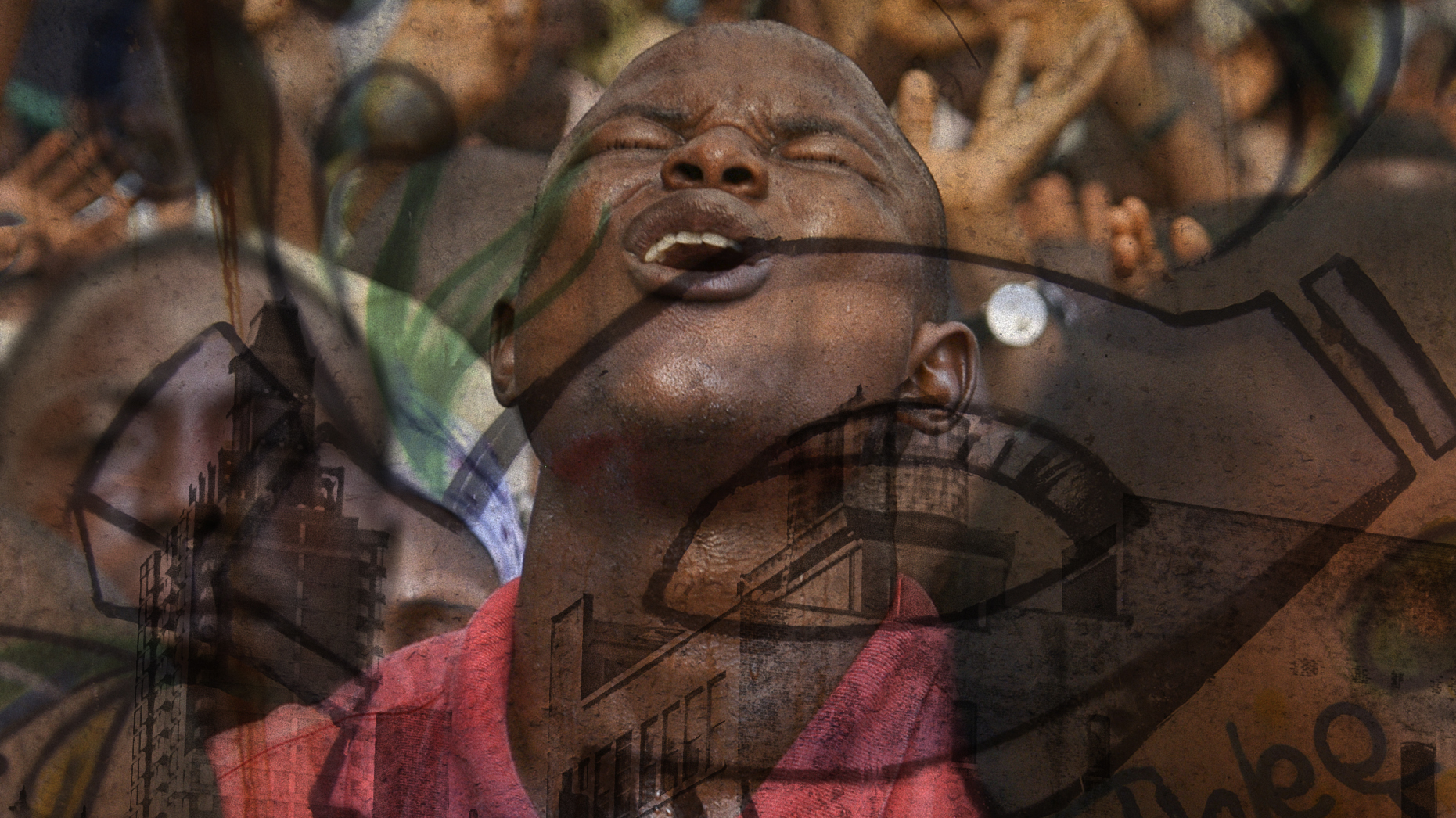After waking up in the middle of the night to the high-pitched cries of my sweet daughter, I rolled out of bed to warm a bottle. With her snuggled closely in my arms, I reached for my iPhone and noticed that I had received a text message from one of the other pastors at my church. It was a link to a recent interview with the rapper, actor, film producer, and social media phenomenon Nick Cannon.
As a pastor in the inner city, I often listen to interviews and podcasts on urban stations so I can stay up to date on some of the prevailing thoughts that influence inner-city culture. With millions of social media followers, Nick Cannon has a cult-like following that adheres to his business advice, wisdom, and insight like a modern day prophet. After placing the baby down, I popped in my headphones and listened to the entrepreneur open up on a wide range of issues including his failed marriage with Mariah Carey, his new NCredible headphones, and even his belief in God.
Cannon, the son of the late televangelist James Cannon, was asked about his eccentric dress and specifically the reason he dons a diamond-studded turban. He mentioned that he wore the garb for religious significance. He'd been studying different religions and cultures, and while he affirmed his Christian roots, he'd become greatly influenced by the teachings of the Nation of Islam, The Moorish Science Temple, and a plethora of other mystical religions.
Cannon goes on to mention that Christianity was his first language but that he is now fluent in a range of different spiritualities as well. As I listened intently, it became clear that his religious worldview was based on a combination of Christian, Islamic, and Moorish thought which frames his unique, personal belief system. I immediately recognized the symptoms of urban religious syncretism. Religious syncretism is the reconciling and fusing of two or more unrelated religious beliefs and practices in a new system. In other words, it’s the incorporation of beliefs into religious traditions that are wholly unrelated.
While syncretism occurs in every context, it takes a different shape in the inner city. Urban religious syncretism is often a fusion of Egyptian Mysticism (often learned from YouTube videos), ahistorical documentaries (i.e. Hidden Colors and Christ in Egypt: The Horus-Jesus Connection), urban folk religions (i.e., Moorish Science Temple, Nation of Islam, Black Hebrew Israelites, etc.), misunderstood Christian doctrine, unbiblical pan-African rhetoric, and countless other falsehoods.
Before falling back to sleep, I thought about the ever-evolving, pluralistic urban context and the similarities between Cannon's philosophy of religion and the religious pundits that proselytize their beliefs on the street corners of the inner cities of America. Comparatively speaking, Cannon’s rhetoric is very similar to the doctrines of those who deny the historical Christ in the Afrocentric movement, whom I’ve engaged in the urban/inner-city context. Like Cannon, they combine complex, often contradictory, spiritual elements and blend religious practices to form personal, pseudo-indigenous religions that suit their lifestyles and passions.
While urban religious syncretism can take a plethora of forms, no matter the form, it’s disheartening because it compromises the tenants and integrity of the gospel. Urban religious syncretism discards core doctrines—such as the divinity of Christ, penal substitution, and the Trinity, among other things—to form a new gospel that is tailor-made to be inoffensive, unobtrusive, and ultimately ineffective. Consequently, unwitting and incognizant brothers and sisters have been drawn away from the gospel of Christ by doctrines that sound true, but only borrow authority from other religions and distort the gospel (Gal. 1:6–9).
An Ancient Enemy
Sadly, syncretism is not a new adversary of the church. In the early church, these philosophers used Christian language such as redemption, Christ, angels, and creation to dress their esoteric philosophy. It has been a persistent problem in cities since Christianity’s inception because it appropriates biblical ideals, twisting them toward unbiblical ends and interpolating them with heretical ideals.
Gnosticism was an early culprit of this religious mix-and-match. During the first few centuries after the death and resurrection of Christ, Gnosticism gained popularity among some Christian groups. Gnosticism taught that there was some additional secret knowledge that gave access to true salvation. It also espoused dualism (i.e., the evilness of the material world), utilizing religious language to misrepresent gospel truth. Sadly, many believers became confused because their neighbors were involved in this off-brand of Christianity that radically departed from the tradition passed down from the apostles. Because it caused confusion, theologians such as Justin Martyr and Irenaeus of Lyons confronted these philosophies to clarify the biblical position and expose the lies of the heresy.
Another example of syncretism occurred during the 19th century. Liberal theologians, especially in Germany, began to adopt false assumptions about scientific and material views of life. These theologians translated the idea of resurrection into modern psychological terminology and explained resurrection as an event that occurs within the mind and soul of the person who experiences and embraces it. According to this psychologically influenced theology, whether Jesus really rose from the dead didn’t matter; what mattered was that the disciples experienced a resurrection in their psyche. Just as in the past, Christian terminology was wed with false views to captivate the unsuspecting. Modern syncretism occurs when the pristine waters of the gospel become polluted with non-gospel centered sermons, positive thinking principles, and/or oversaturated with political rhetoric and patriotism.
Urban Syncretism Didn't Occur in a Vacuum
Like these examples from church history, today’s urban syncretism did not occur in a historical vacuum. While ubiquitous in many ethnic groups, it has a distinguished history among African Americans. Before the history of Africans was interrupted by the transatlantic slave trade, African religious beliefs and practices were varied and numerous. In addition to the worship of a wide assortment of deities and tribal religions, the African continent had both significant Christian and Islamic influence.
Despite the differences, there were common threads among cultural groups. West African societies, which were the largest source of slaves, shared belief in a pantheon of lesser gods ruled over by a chief deity to whom they prayed and made sacrifices. The objective of their religious devotion was the harmonious balance between the spiritual and material world.
West Africans, who came in contact with Christianity through Portuguese missionaries as early as the 15th century, often continued to adhere to many of the rituals and religious beliefs of their African ancestors. Blacks in the southern colonies that embraced Christianity after they arrived in America didn't completely abandon their old world religion; in fact, they blended Christian influences with their traditional African rites and beliefs. Symbols, such as crosses, were conflated with charms to ward off evil spirits. African religions continued alongside Christian practices among the slaves, and the effects of such traditions can be clearly seen in worship styles such as call and response, multiple rhythms and repetition in music, and body movement in worship.
After the Emancipation Proclamation, Civil War, and Reconstruction, religious syncretism came to resemble what we see in our cities today. During the great migration in the early 20th century, many Southern blacks moved from rural farmlands to unfamiliar urban contexts. Looking for the church to affirm their traditional values and provide a sense of community, many country migrants encountered black Jews, black Muslims, black Catholics, black charismatics, and black spiritualists. Some of these groups believed their leaders could exercise divine healing.
While accustomed to the Christian Baptist, Methodist, and Pentecostal churches in the Southern states, these migrants were now exposed to many new and varied religious choices. While maintaining an element of their Christian roots, many were swayed by false teachers within the inner cities. It was during this period, when nearly six million people moved to the urban centers of America, that such urban religious syncretism developed and established its foothold within the inner cities of America.
Responding to Urban Syncretism
While religious syncretism is a danger in every age, with the boom of the technological age, it’s becoming increasingly problematic in the urban context. As a pastor in an inner-city context, I regularly engage people with questions about Egyptian mysticism, Pan-Africanism, ecumenical councils, canonization, and the early history of Christianity.
Some of these brothers and sisters, who were once professing Christians, are now seeking to “find their truth” (a colloquial way of saying they are splicing various religious beliefs to contrive an individualist religion that suits their needs). They have developed their theology from videos on YouTube, Vimeo, Facebook, and other social media platforms.
What becomes apparent after a few minutes of conversation is that there is not absoluteness to their faith because they reject fixed orthodoxy. Those who are influenced by syncretism, especially of the urban variety, believe in God when it suits them and follow the Scripture when it suits their agenda. The basic appeal to the exclusivity of Christ is abhorred in a culture that celebrates religious pluralism. Syncretism is dangerous because it hijacks Christianity, imports non-biblical notions, and distorts its message by doing away with the uncomfortable or unpopular parts. Syncretism robs Christianity of its truth and creates a user-friendly counterfeit that accommodates to our religious preferences but ultimately has no power and cannot save.
Sadly, many of my brothers and sisters have believed in such delusions and have turned away from Christ because the flawless rhetoric of false teachers seems more appealing than the timeless gospel message. What’s disturbing about this trend is proponents of urban religious syncretism often believe that the relationship between Christianity and other urban folk religions is one amongst equals.
Unlike the Egyptian mysticism of the 16th and 17th centuries that is wholly based upon fables, I often argue that the Christian message is one that is deeply rooted in history and yet to be disproved archeologically. Rather than seeking to appease a god through human agency, the God of the Scriptures is self-satisfied by the offering of his son, Jesus, upon the Cross for the remissions of our sins. This stark contrast demonstrates that amalgamating anything with Christianity is unfaithful to the biblical narrative and incompatible with the gospel.
From a practical standpoint, there is a limited number of contextualized resources that address the crisis of faith that many urban Christians experience in the inner-city context. But as they continue to develop, it will be increasingly important for defenders of the faith to combat these heretical practices by creating refutation videos, hosting conferences, writing blogs, publishing books, and utilizing social media and other platforms to contend for the faith. The hope is, however, that people who claim a fluency in many religious languages will reject the incompatibilities of these religions and embrace their first language: true Christianity.
Ernest Cleo Grant II (@iamernestgrant) is a pastor in Camden, New Jersey, a doctoral student, community advocate, and writer. He blogs at iamernestgrant.com.








